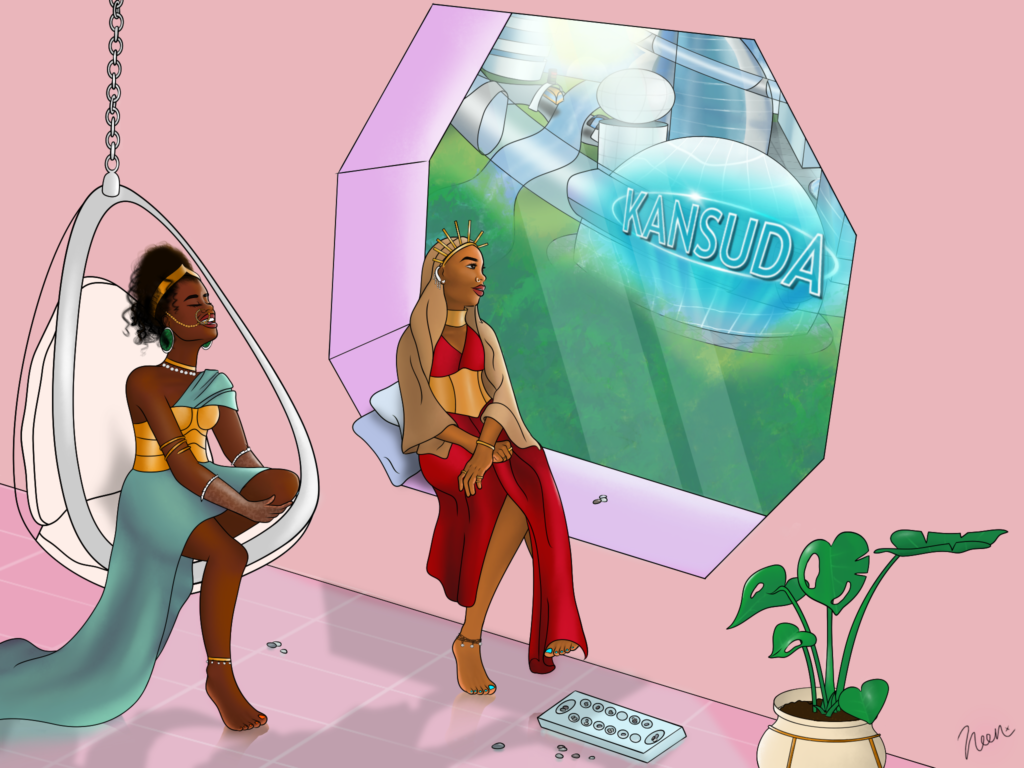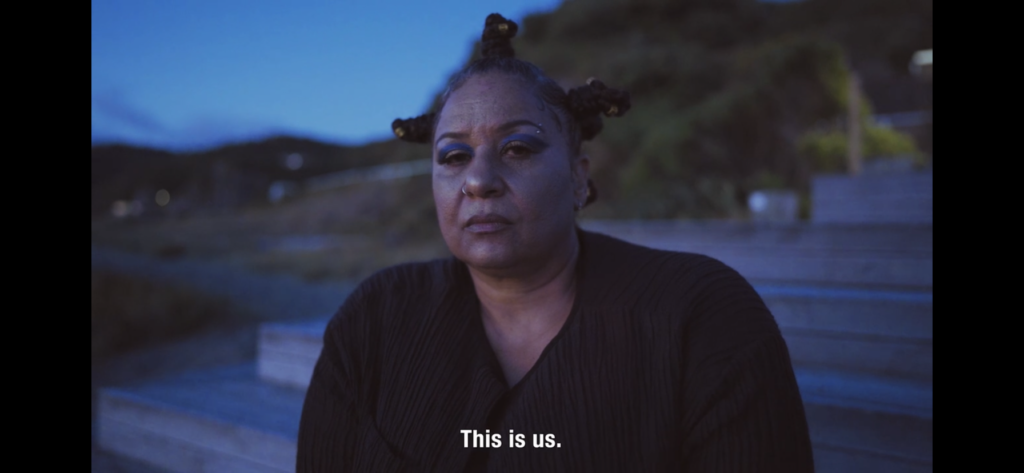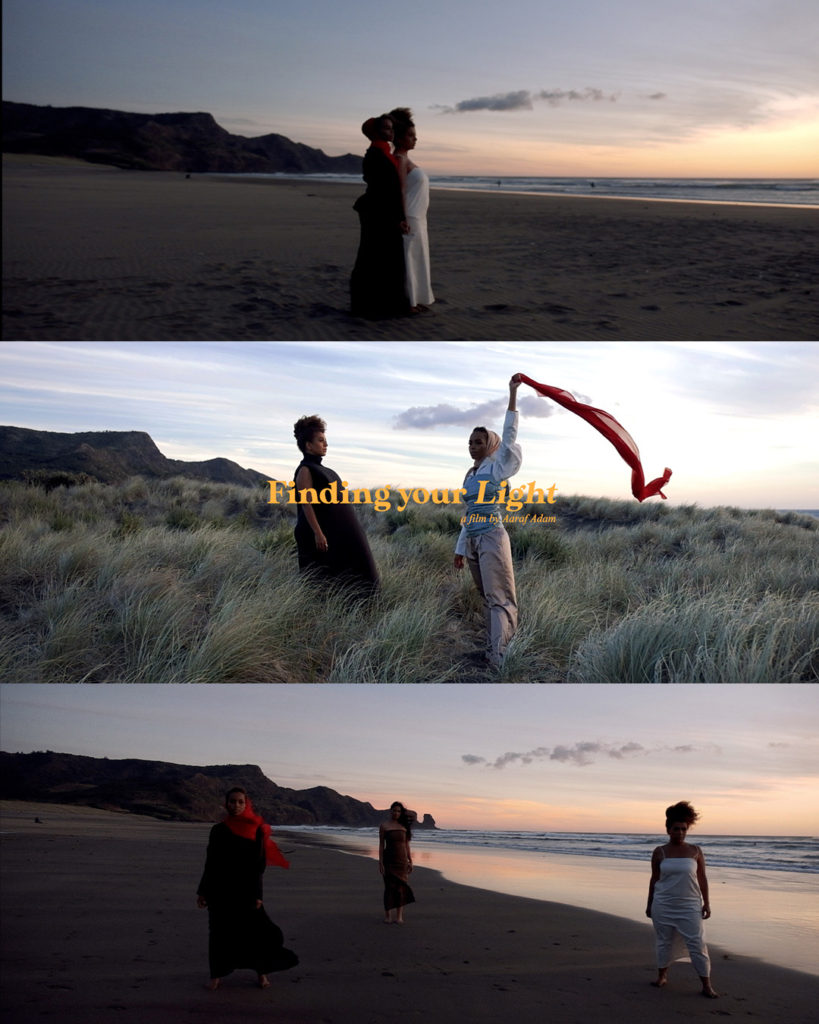By Aaraf Adam

Destined for the heights. Destined to strive and reach the unattainable. Destined to preserve and create a new level of consciousness, understanding. Some may say I took the meaning of my name too literally. Perhaps I did, but is your name not part of your identity? A namesake that you should strive to embody? I suppose that would also depend on what your name means. For I am blessed to have my name serve as a constant reminder of my light, my purpose. Aaraf: derived from the Holy Quran (Surat Al-’Araf- Chapter 7) and translated from Arabic to mean ‘the heights’. It is who I am, it is where I will always go.
My ancestors helped set the tone of my present and future, the roots that they have entrenched hold the bounty throughout our resource-rich land Sudan: petroleum, iron ore, silver, gold. We store and generate so much abundance. As an artist, I am motivated by my desire to build a legacy for myself and the generations of Sudanese creatives that come after me. We deserve to have a voice, a space to call our own, and proper representation in literature and media. I am inspired by myself. The courage, journey, and healing that has led me to where I am today. I am inspired by my potential to break down barriers and shed light on others. I aim to build a legacy for generations of Sudanese youth to be their rawest, most genuine, true selves.
There is a gap in stories of the diaspora, a true bridge is needed to showcase global unrepresented stories and identities. This is why I birthed Kansuda into fruition. KanSuda: named after al-Kandaka aSudania, one of the original nubian queens, Kandake Amanirenas, a queen of the ancient African Kingdom of Kush who led 30,000 soldiers from her throne in Meroë, an ancient city located in Sudan, against the Romans and triumphed, winning a great victory and proving how important it is to do everything in your power to protect your people, your roots. She embodied the meaning of her name, a kandake, a queen, a “great woman.”
Visibility and authenticity are the keys and root of my work. It is why I began to teach myself filmmaking: reading any related film articles, success stories on what people did in the industry, and most important speaking to filmmakers on their journey. My first project is The Black Pacific. Throughout my experience at the time, I found that media in New Zealand didn’t have many Black-centered films. So I thought, “Why not produce it myself?” I sought out to depict my friend and mentor, Liya Kidda, one of the first African New Zealanders to establish the diasporic Afro-Kiwi identity:

“We’re brand new. It’s the last place the African diaspora has reached on the globe (Next stop: Antarctica). I’d say we are defining who & what we are as we are living it, I suppose. Quite literally. 60 years of post-war “organized migration” from the Special Commonwealth African Assistance Plan 1960 to other scholarships in the 80s….So it’s brand new.” Liya Kidda
Owning her identity, knowing who she is in and out, an African living in New Zealand, showing pride in it, Liya depicts the many dynamics and nuances of being Afro-Kiwi and I knew that bringing light to her story on screen was the only motivation I needed.
I focus on building pieces that create space for some of the most marginalized communities in the world by just shooting them being raw, honest, themselves, in addition to partnering with locally recognized brands to incorporate fashion as another layer of expression. It all acts to broaden the audience and mission and depicting the beauty and power of our illustrious diasporic identities no matter where we hail from.

“Finding Your Light,” a film by Aaraf Adam, shot by Jarem Cabamongan featuring Nimo Mohammed ( Hijabi), Naawie Tutugoro ( Black dress in the middle shot) Vogue Ponini-Pilisi ( brown in a two-piece set)
I truly believe art to be one of the only consistent outlets trying to alleviate the pain this world exudes through love and community. As Sudani people, one of our biggest outlets of expressing injustice is through the mode of satirical protest art. From family gatherings to segments on national television, we tackle serious and important issues through the use of humor. This creates a space where it is easier for people to digest reality: making things that they normally ignore, entertaining them, and grasping their attention. Most importantly, it reaches a marginalized audience that prefers to watch things for pure entertainment, allowing them to think a little deeper through pure enjoyment; they don’t look for the same things mainstream audiences might. I do this by reaching out to collectives such as Girls in Film, Feminist, and Protein to broadcast my work, in addition to submitting my films to local and international film festivals.
I weave a bit of subtle vulnerability through my projects as my process for every project thus far stems from my poetry. It is a glimpse into my heart, my most impactful form of expression…
“Most of the time when writing, I write to myself, to promote a narrative I should be living by. To recognize and embody my own power before seeking anything from anyone else”
I transform my writings and thoughts into visual productions. Every project I release holds deep intention. I create safe spaces that help others to heal through art. The intention is to provide a haven that makes way for the growth of Black and brown people, in addition to spreading the message of institutionalized injustice through subtlety and visibility. This is why I like to focus on changing the rhetoric of underrepresented communities such as Black Muslim women through fashion, shattering the norms of hijab being oppressive through beautiful depictions of our modesty. I am the epitome of visibility as I depict a Muslim hijabi woman. I aim to be seen in the way I want to be portrayed throughout my artistic expression, through the art form that is my pictures. To be visible is to show that I can and must go beyond the norms of our society in order to relay the presence of Muslim women: that I, a Black Muslim woman, is visible to the world and will continue to be and do so throughout various outlets.
“To be visible is to speak out and to be heard.
Being visible is beyond being seen, it’s beyond existing, it is being heard
Heard with your words, your presence, your voice. To hear your own
Being empowered, confident, to speak, to roar, and to be seen
Loving yourself is to find your way.”

I am a Muslim, Sudanese-American creative. I craft projects that hold significant meaning to myself as it is my identity and struggle as a Black, African woman growing up in the U.S and living in New Zealand. I believe people can be bound by the beauty of a soulful performance, whether it be through visual narratives or merely storytelling. Through filmmaking, I can share these stories: uniting a collective society through shared and individual experience. My journey and my identity guide me as I create my story and give me the tools to build an inclusive community. My story is one of identity, roots, and unity.
My story is a legacy to Sudan.
All of the poetry quoted here was written by Aaraf Adam.
Aaraf Adam is a 21-year-old Sudanese- American, Muslim writer, creator and filmmaker. She produces narrative art with intention and heart, with a focus on collaborating with Black artists and storytellers with the aim of uplifting continental and diasporic Black women with emblematic experiences, particularly those in underrepresented communities such as Black Muslim women.
